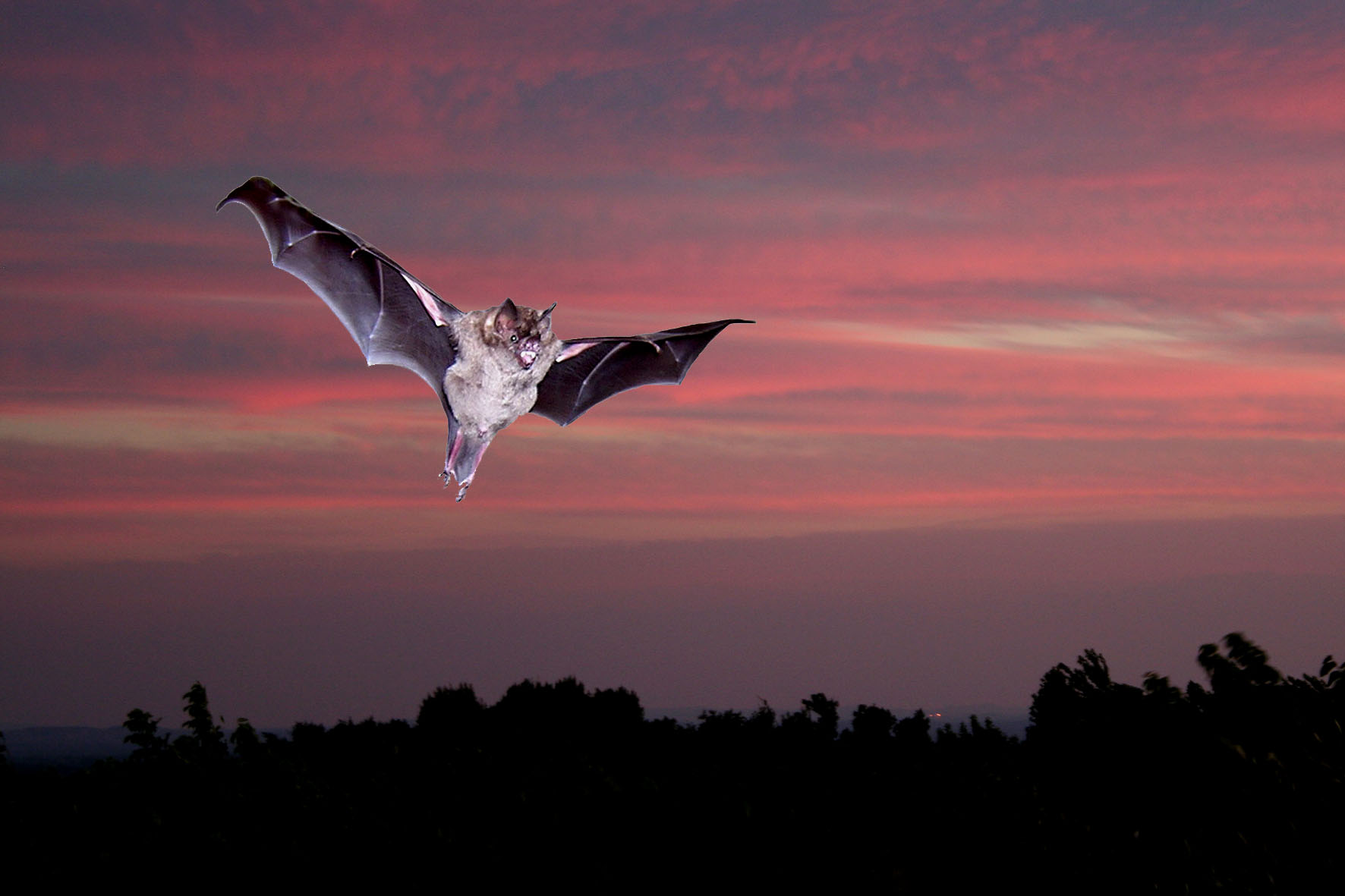
© Cornelia Hagemann, Goethe University Frankfurt/M, Germany.Flying Carollia perspicillata bat photographed at its breeding colony at the Goethe Universtiy Frankfurt/M.
The eyes of nocturnal bats possess two spectral cone photoreceptor types for daylight and colour vision. Reporting in the open-access, peer-reviewed journal
PLoS ONE, scientists at the Max Planck Institute for Brain Research in Frankfurt and the University of Oldenburg have detected cones and their visual pigments in two flower-visiting species of bat.
With electroretinographic recordings, they found an increased sensitivity to UV light in cone-stimulating light conditions. The researchers conclude that bats' eyes are adapted for both daylight and UV vision. The UV-sensitive cones may yield a number of advantages for bats, including improved visual orientation at twilight, predator avoidance and de tection of UV-reflecting flowers (a benefit for those that feed on nectar).
Bats are mammals in the order Chiroptera, which has two suborders: fruit bats (
Megachiroptera) and microbats (
Microchiroptera). Microbats (see images 1 and 2), also called 'true bats,' echolocate, while fruit bats do not. Microbats have small eyes and well developed visual centres in the brain. In bats, vision plays an important role in predator avoidance during foraging and homing and, in some species. in prey detection. Moreover, bats are exposed to different levels of ambient light during the day, depending on their roosting situation.

